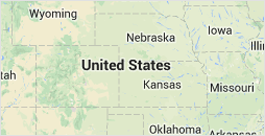Alester Brown
PHONE NUMBER : -----
Map

What is Sclerotherapy?
An estimated 40 million people in the United States have varicose veins. These twisted and enlarged veins sit close to the skin, usually appearing on the legs and thighs. While most cases aren't dangerous or a cause for concern, the appearance of the veins can be a major source of self-esteem issues. Fortunately, there are treatments available.
Sclerotherapy in San Francisco is a unique procedure that treats varicose and spider veins. Rediscover beautiful legs: learn about sclerotherapy in San Francisco on this website for expert vein treatment and confidence!
How Sclerotherapy Works
The procedure is relatively simple and performed in an outpatient setting. As you lay on your back with your legs slightly raised, your dermatologist will insert a small needle into the varicose vein.
The needle fills the vein with a solution that irritates the vein lining. It forces the vein to swell and shut off blood flow. Health care professionals then massage the area to spread the solution.
Your dermatologist may recommend using compression stockings or bandages. They may also direct you to walk frequently.
Sclerotherapy doesn't provide immediate results. The goal is to encourage the vein to scar and force blood into healthier veins. Over time, the varicose veins will collapse and fade. Typically, this occurs within three to six weeks. However, larger varicose veins may need several months to fade after sclerotherapy in San Francisco.
Some patients may also require multiple treatments.
Why Consider Sclerotherapy?
Many people turn to sclerotherapy for cosmetic reasons. Large varicose veins can become prominent, pressing against the skin. However, there are other reasons to consider the procedure.
Varicose veins can cause swelling and aching in the lower extremities. Some people experience burning sensations or serious cramping at night. Sclerotherapy may provide relief from those issues.
Are There Any Risks?
As with any procedure, sclerotherapy does have risks. It's important to discuss these risks with your dermatologist to consider if treatment is right for you.
Bruising, darkened skin and general soreness are common. However, those issues usually subside within a few days. In rare cases, sclerotherapy may cause blood clots or air bubbles to form. Fortunately, these instances are rare. Most patients see great results with no adverse effects or downtime.
Author Resource:-
Alester Brown writes about dermatology and Mohs Surgery. She advises people on the highest quality of exceptional medical, surgical and cosmetic dermatologic care. You can find her thoughts at reconstructive surgery blog.
